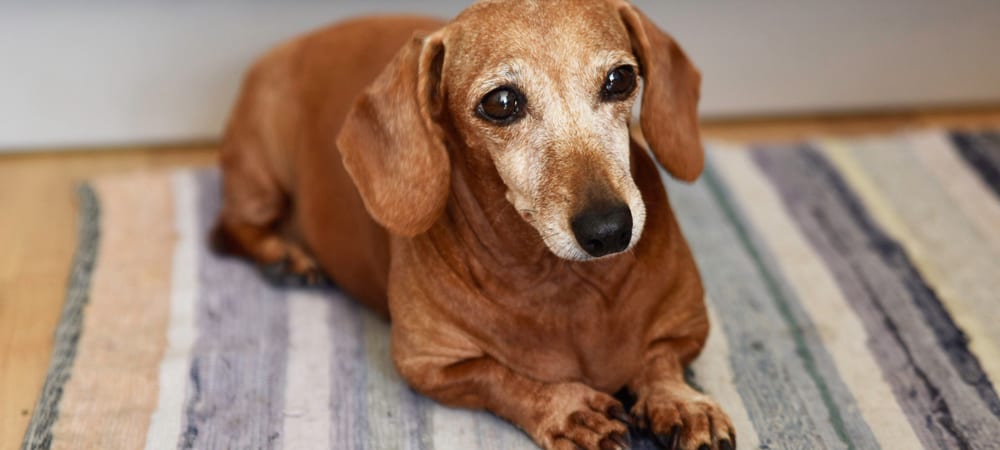Senior Pet Health: Canine Lumps & Bumps

As a dog ages, they often develop spongy lumps, called lipomas, on their bodies. These lumps are usually fatty tumors and no reason to worry. If the lump in question is soft and round with well defined edges, this is a good indication that the lump is not cancerous. If the lump has a little wiggle room, meaning it doesn’t feel tightly attached to your dog’s skin, this is another indication that the lump is benign. Lipomas can occur anywhere on a dog’s body but are commonly found on the trunk.
If you find a lump or a skin abnormality, feel around it and work your fingers over it to confirm that it is, in fact, a skin lump and not matted fur or debris. If you do find a lump, don’t panic. Not all lumps are signs of impending doom. Many lumps may be benign, non-cancerous fatty tumors, ticks that need to be removed, skin tags/moles, or they may just be a swollen area where your dog bumped into something.
If you find a mysterious lump or bump, you should make an appointment to have it examined by your dog’s veterinarian. Continue to observe it and monitor its progress so you can answer questions like, when did the lump appear? Has it grown in size? How quickly?
If your vet is concerned about the nature of the lump, he may decide to aspirate it or take a biopsy. Aspirating involves numbing the area with a local anesthetic and withdrawing a small amount of fluid from inside the lump (this is called a “fine needle aspirate). A biopsy is when your vet removes a small piece of the tissue or fluid and sends it off to the lab to be examined. Depending on the results, you’ll know whether the lump is a cause for concern, or just a fatty, benign tumor that can be left alone. If the lump contains cancerous or pre-cancerous cells, it may need to be surgically removed. Overweight female dogs are more prone to developing lipomas, so prevention is a great reason to get out there and walk your dog a little more with a leash and harness.
Other types of lumps and bumps include:
Hematomas: fluid-filled pockets on the inside of the ear-flap. Usually caused by trauma to the ear such as shaking or banging on a table, etc. Your dog’s ears are filled with tiny blood vessels and when the blood vessels burst, your dogs ear will fill with blood or fluid. See your vet right away if you suspect your dog has a hematoma.
Papillomas: or warts, to the rest of us. Warts are caused by the papilloma virus and result in cauliflower-like skin and mouth lesions in dogs. These viruses tend to affect three groups of dogs: young dogs who were exposed to the virus, immune-suppressed dogs, and older dogs who grow warts as they age.
Folliculitus: or infected hair follicles. In mild folliculitis, you will commonly find numerous small pustules with a fur shaft protruding through the center of each. In mild cases, a small ring of scales may form around the infection. Once the follicles are infected, this condition can quickly worsen. You should see your vet right away if you suspect this condition.
Sebaceous Cyst: These start out as a small benign bump under the skin and can grow to be around one inch in diameter. They develop when a hair follicle or skin pore gets clogged with dead skin cells, dirt, foreign or infectious matter, or excess oil (not unlike acne in humans, just usually much larger). Certain breeds including schnauzers, yorkies, poodles, and spaniels are predisposed to cysts. You may be able to relieve sebaceous cysts through frequent warm compresses but it isn’t pretty. You should consult your vet to determine the best course of action and to eliminate the chance for infection.
Just like with humans, lumps and bumps are a natural part of growing up.




